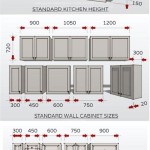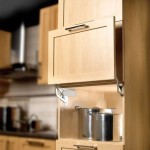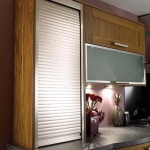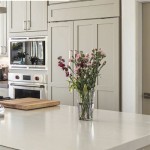How To Fix Kitchen Cabinets Separating From Wall
Kitchen cabinets are integral to both the functionality and aesthetics of a kitchen. Over time, cabinets can begin to separate from the wall, creating an unsightly gap and potentially compromising their structural integrity. This separation can stem from several factors, including loose screws, deteriorated adhesive, water damage, or simply the weight of the cabinets themselves over time. Addressing this issue promptly is crucial to prevent further damage and maintain the kitchen's overall appearance.
Before undertaking any repair, it is essential to identify the underlying cause of the separation. This diagnosis will inform the appropriate course of action. Begin by carefully inspecting the area where the cabinet is pulling away from the wall. Look for loose screws, damaged wood, or signs of water damage, such as discoloration or swelling. Knowing the root cause allows for a targeted and effective repair.
One common cause of cabinet separation is loose screws. Over time, the vibrations from daily use can cause screws to loosen, leading to the cabinet pulling away from the wall. To address this, one should attempt to tighten the existing screws using a screwdriver. If the screw holes are stripped, larger screws can be used. However, if the wood is significantly damaged, filling the holes with wood filler and pre-drilling new pilot holes is recommended before inserting new screws.
When adhesive failure is the culprit, more involved steps are necessary. The cabinet will need to be carefully detached from the wall to reapply adhesive. Begin by emptying the cabinet and removing any shelves or drawers. Then, using a putty knife or similar tool, carefully pry the cabinet away from the wall. Remaining adhesive residue should be scraped off both the cabinet back and the wall surface to ensure proper adhesion of the new adhesive. Construction adhesive designed for bonding wood to wall surfaces is recommended. Apply the adhesive in beads or a zig-zag pattern to both the cabinet back and the wall. Carefully reattach the cabinet, applying even pressure and securing it with clamps until the adhesive dries completely. Refer to the adhesive manufacturer’s instructions for drying times.
Water damage can significantly weaken the cabinet structure and the wall, leading to separation. Addressing this issue requires repairing the source of the water leak first. Once the leak is fixed and the affected area has thoroughly dried, assess the extent of the damage to both the cabinet and the wall. Damaged sections of the cabinet or wall may need to be replaced. Once repaired, the cabinet can be reattached using screws and construction adhesive, following the same procedure as for adhesive failure.
In some cases, the weight of the contents within the cabinet can contribute to its separation from the wall. Overloading cabinets, especially upper cabinets, places excessive stress on the mounting hardware and the cabinet structure itself. To mitigate this, remove any unnecessary items from the cabinets and ensure the remaining contents are evenly distributed. Reinforcing the existing mounting hardware with additional screws or brackets can provide added support and prevent further separation.
For more complex separations or extensive damage, contacting a qualified professional is highly recommended. A professional contractor possesses the expertise and specialized tools to assess the situation accurately and implement the most effective repair strategy. They can also address any underlying structural issues that may be contributing to the problem.
Preventing future cabinet separation involves several proactive measures. Regularly inspecting cabinets for loose screws or signs of damage allows for early intervention and prevents minor issues from escalating. Avoiding overloading cabinets, especially upper cabinets, minimizes stress on the mounting hardware. Promptly addressing any water leaks or plumbing issues in the kitchen prevents water damage that can weaken cabinets and walls.
Choosing appropriate mounting hardware for the cabinet's size and weight is crucial for long-term stability. Using high-quality screws and appropriately sized wall anchors ensures a secure and lasting connection. For larger or heavier cabinets, consider using additional support brackets to distribute the weight more evenly and prevent stress on the mounting points.
Employing proper installation techniques from the outset is fundamental in preventing future problems. Ensuring cabinets are securely fastened to wall studs with appropriate screws and anchors provides a solid foundation. Using a level during installation ensures the cabinets are aligned correctly, preventing uneven weight distribution and stress on specific areas. Adhering to manufacturer recommendations for installation procedures and weight limits contributes significantly to cabinet longevity and stability.

Cabinets Pulling Away From Wall Doityourself Com Community Forums

Cabinet Side Separating How To Fix Doityourself Com Community Forums

How To Repair A Kitchen Cabinet That Is Pushing Out On The Side Hometalk

Cabinets Pulling Away From Wall

Cabinet Side Separating How To Fix Doityourself Com Community Forums

Kitchen Cabinets Pulling Away From Wall What Do You Now My Upgrade Home

Cabinet Side Separating How To Fix Doityourself Com Community Forums

Baseboards Pulling Away From Wall

How To Remove Kitchen Cabinets Budget Dumpster

Caulking Gaps A Homeowner How To
Related Posts








